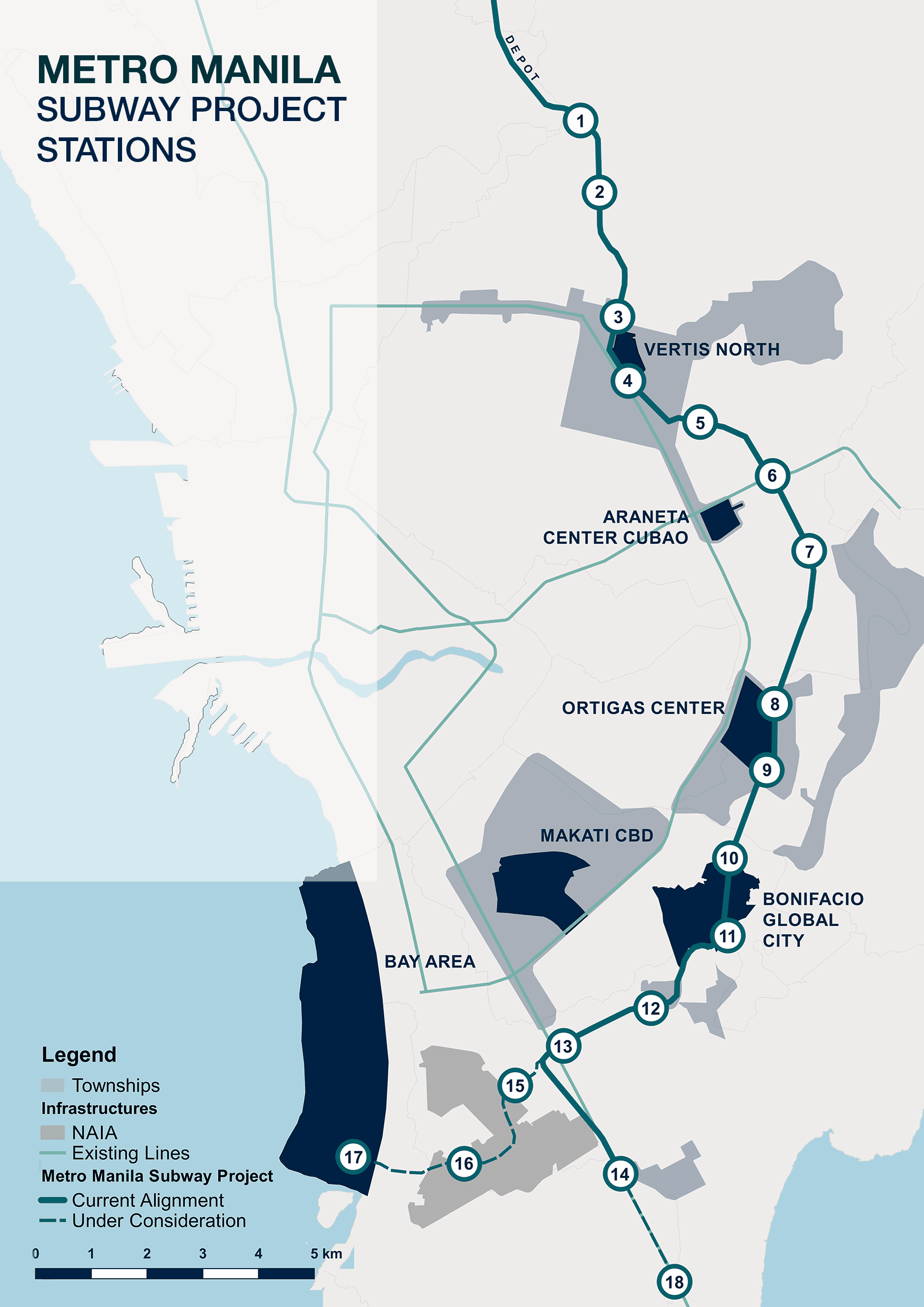
Reading Time: minutes
The construction of the long-awaited Metro Manila or Mega Manila Subway is now underway. The Department of Transportation recently broke ground on the Philippines' first underground railway last February 27, 2019. The first phase of the joint Japanese-Filipino project of Shimizu Corp., Fujita Corp., Takenaka Civil Engineering Co. Ltd., and EEI Corp. is expected to be completed in 2022 while all 15 stations will be fully operational by 2025.
The Metro Manila subway system is the headliner or the first of the high-impact projects of the government under the "Build, Build, Build" program. It is divided into 2 phases and will run from North Caloocan to Cavite. Major central business districts in Makati, BGC, and Quezon City are forecasted to benefit as the subway routes are expected to run through these business locations.
According to the project's executive summary, there will be a total of 13 stations situated in Quezon City, Pasig, Makati, Taguig, and Paranaque in phase 1. The subway's depot will be located in Valenzuela, making the North Caloocan area more connected to the other cities. The subway promises a commuter a quick 35-minute ride from Mindanao Avenue to FTI station.
Inside the 'Mega Manila Subway'
The subway line for Metro Manila is 30.8-km long and is considering placing a station for the Ninoy Aquino International Airport (NAIA). The Infrastructure Cluster Performance Report shared that a common station will also be built to integrate the subway with the Metro Rail Transit (MRT) 3, and the Light Rail Transit (LRT) 1 and 2. The railway will also be connected to PITX and the Cavite Gateway Terminal in Tanza.
According to the DOT, a fleet of 19 trains with 8 car per train will service all 14 stations with an operating speed of 80 kph. The subway system is expected to carry 608,000 passengers per day with a travel time of 35 to 43 minutes.
Improving accessibility to offices, townships
BGC, Makati, and Quezon City's estate developments and offices will benefit significantly given the high concentration of stations near these submarkets. Out of the 15 stations, 6 will be located in Quezon City in the following key areas: Mindanao Avenue-Quirino Highway, Tandang Sora, North Avenue, Quezon Avenue, East Avenue, and Anonas.
North Avenue houses the Ayala Land's new mixed township, Vertis North. It features condominiums, hotels, shopping malls, and office spaces for lease in Vertis North Corporate Center.
The subway route is also near the city of Makati, making the top financial district more open to the workforce. As the primary central business district in NCR, it is home to iconic office building such as Insular Life Building along Ayala Avenue and V Corporate Center in Rufino.
BGC will also be one of the 4 stations situated in Taguig City. This will most likely the commute to office buildings such as ArthaLand Century Pacific Tower (ACPT), Inoza Tower, ACCRALaw Tower, Finance Centre, High Street Corporate Center, and One Park Drive more convenient to the commuters.
Other office submarkets such as Ortigas, Pasig, and Paranaque will be covered by the Mega Manila subway system. The Metro Manila subway will traverse through Paranaque and will be an additional transport option to get to the Paranaque Integrated Terminal Exchange, and offices in Alexcy One (former Landco Corporate Centre), FLDI Corporate Center, and Ri Rance Corporate Center.
The subway is also projected to rise inside government property. This will cover the Manila Seedlings Bank, Veteran's Memorial Medical Center, Camp Aguinaldo, National Mapping and Resource Information Authority, and Bases and Conversion Development Authority.
Moreover, the report shows that subway infrastructure can assist in easing traffic congestion in the National Capital Region (NCR). The rail system can help change people's mindset and place their trust in public transportation rather than investing heavily on private vehicles. Dutch experts also claim that this could be the Philippines' chance to follow its ASEAN counterparts who have successfully transformed its public transport efficiently.
The Japan International Cooperative Agency (JICA) reported that the country is losing Php 3.5 billion due to its severe traffic congestion. JICA Philippines Office Chief Representative Susumu Ito noted that it can increase to Php 5.4 billion a day in 2035. However, the government's "Build Build Build" program-where the subway system falls-are expected to mitigate and eventually decrease it to Php 3 billion a day.
Innovating for disaster-proof transport
The Philippine Institute of Volcanology and Seismology (PHILVOCS) that 357 billion-peso Metro Manila Subway is safe from earthquakes. DOST Undersecretary Renato Solidum Jr. said that its route will not pass by the West Valley Fault that is ripe to move soon.
Solidum noted that it took extra precaution in the planning and aligning of the subway system to avoid future disasters. He also noted that underground railways are more "earthquake proof" as it moves with the ground compared to elevated train systems.

